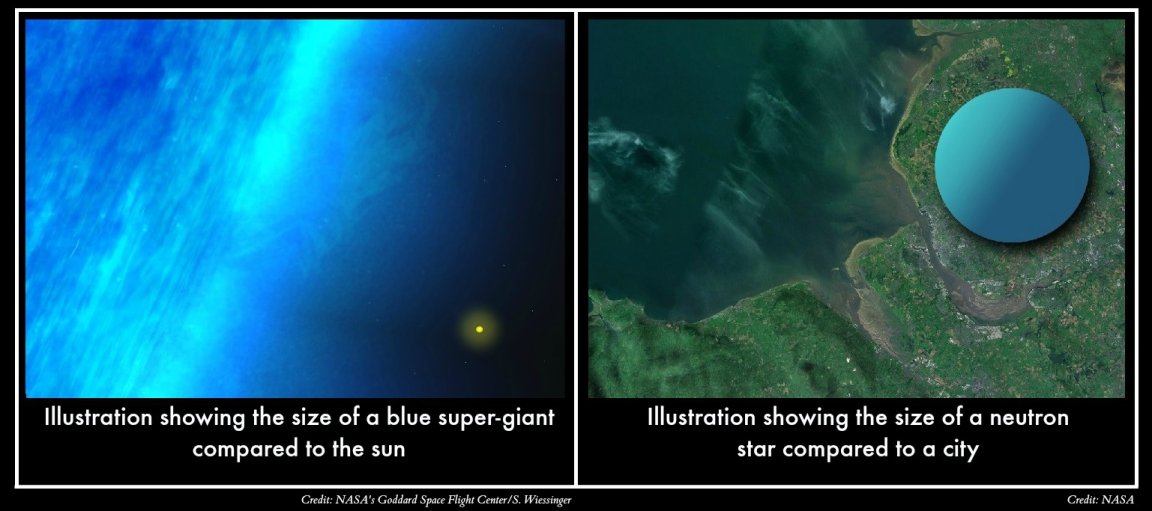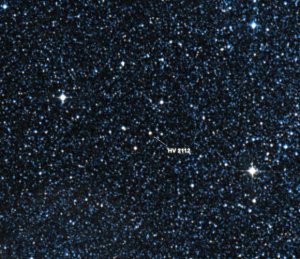
Back in January, we wrote about the potential discovery of the very first TZO. If you aren’t familiar with the acronym, A TZO, short for “Thorne-Zytkow” object, is a theoretical star first proposed in 1975 by Kip Thorne and Anna Zytkow. So, what makes this star any different from any other kind? Well, this star is technically a neutron star/red super-giant hybrid. To be more specific, it’s a red-giant with a neutron star tucked inside of it.
Since they were first hypothesized about, astronomers have put forth several different ways in which these bizarre, counter-intuitive stellar hybrids might form. After all, neutron stars and supergiants have vastly different characteristics; neutron stars are incredibly small, compact and magnetic, while supergiants are among the largest and most luminous stars found throughout the universe; neutron stars are technically stellar corpses, while red super-giants are the cosmic equivalent of corpses-to-be.

From the original article:
“Theorists have proposed that there are several means by which a TZO could form. The most likely scenario is that the two stars begin as a binary star system; with the neutron star falling into its stellar companion. Neutron stars are a lot more dense than red giants, and it is this that allows them to bury themselves into the red giant’s core. This is a rare process, and a long one at that. It is thought to take a thousand years for this to occur.
Finding One:

As you can imagine, it’s pretty difficult to find such an enigma wrapped inside such an incredibly large package. The size difference alone makes the mission akin to searching for a needle in an impossibly large stack of needles, but it can be done. At least in theory…
With the initial discovery of what has now been verified as a TZO, a team of researchers – led by Emily Levesque of the University of Colorado Boulder – used the 6.5-meter Magellan Clay Telescope to probe the spectral signature of a series of red super-giants found in the Small Magellanic Cloud, when one particular star with many strange attributes, dubbed HV 2112, caught their eye.
Another excerpt from the original piece:
“If what was reported at the most recent American Astronomical Society meeting is a Thorne-Zytkow object, the star will have another star in its core, and its chemical signature will be different than that of regular stars. Levesque’s curious discovery is yet to be confirmed as a TZO, but the research team working on it has said that the star contains an abundance of molybdenum, lithium and rubidium, which are plentiful in the theoretical object.”
Not only was the concentration of each element found within the star on point, but the expected temperature of the red supergiant aligned with theoretical predictions about the nature of TZOs. However, this in and of itself does not definitively establish HV 2112’s classification, but follow-up observations reinforce the researcher’s stance.
Case Closed?
While the newest update on the TZO candidate found in the LMG has been released via the Monthly Notices of the Royal Astronomical Society Letters, the team was keen to note that certain chemical characteristics of HV 2112 don’t perfectly match those predicted in theoretical models, but, per Levesque “the theoretical predictions are quite old, and there have been a lot of improvements in the theory since then. Hopefully our discovery will spur additional work on the theoretical side now.”
Still yet, the abnormalities seen in its chemical signature best fit as a TZO. No other alternative comes close to explaining them.
“Since Kip Thorne and I proposed our models of stars with neutron cores, people were not able to disprove our work. If theory is sound, experimental confirmation shows up sooner or later. So it was a matter of identification of a promising group of stars, getting telescope time and proceeding with the project,” Levesque said.
[Reference: University of Colorado, Boulder]
Read the full paper, from arXiv.org, here. The original article can be read here.